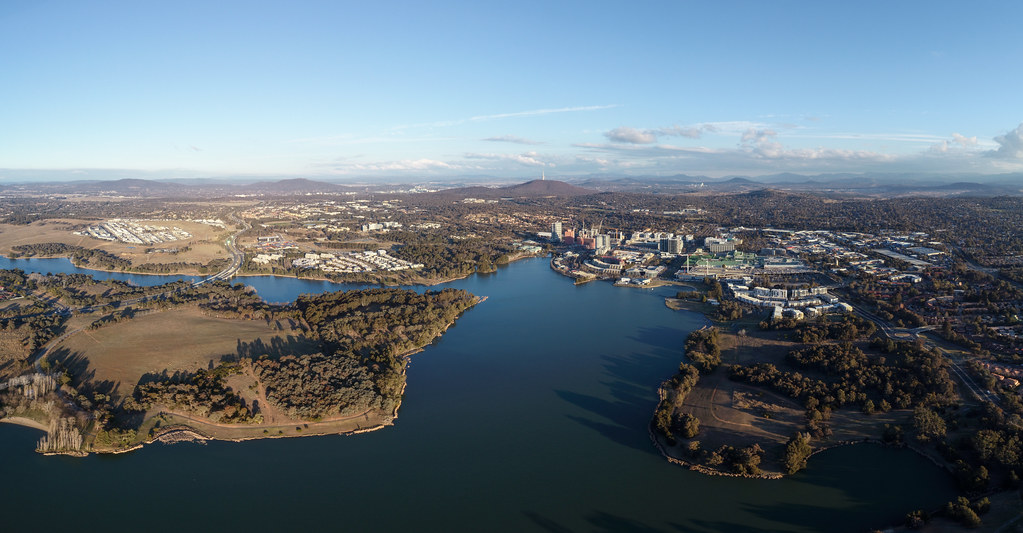Lake Ginninderra
Lake Ginninderra is located on the Ginninderra Creek adjacent to the Belconnen Town Centre.
The lake's water is comprised of stormwater discharge from urban and rural areas. It has a catchment of 9,800 hectares, including Gungahlin and eastern Belconnen.
Lake Ginninderra was established in 1974 with the construction of the Ginninderra Drive embankment over Ginninderra Creek. It has a surface area of 105 hectares and an average depth of 3.5 metres. The lake is U-shaped, forming an extensive central peninsula.
The lake's eastern arm comprises the inflow of Ginninderra Creek, from Giralang down past the naval station to the southern tip of the peninsula. This area comprises extensive wetland and bird habitat for much of its length.
Facilities
The lake is a popular recreation facility. It is a great place for swimming, canoeing, sailing, fishing and walking.
Swimming areas, toilets and barbecue and picnic areas are located:
- Downstream of the Ginninderra Drive bridge on the eastern arm
- Macdermott Place on the north western side of the lake.
Boat ramps are located at:
- Macdermott Place on the north western side
- Diddams Close on the north eastern side.
A cycleway and walkway have been constructed around the full periphery of the lake. This links with the Belconnen cycleway network at a number of locations.
For more information on the surrounding parkland, visit Lake Ginninderra District Park.
Stormwater control
The lake is an important stormwater retention facility. It links the Giralang, Gungahlin, Eastern Valley Way and Benjamin Way drains or waterways to the lower part of Ginninderra Creek.
It is possible for lake water to be used for irrigation of the John Knight Memorial Park area.
A gross pollutant trap (GPT) and small pond are located on the northern inlet end. They provide an important facility for intercepting and limiting litter discharged from the lake. They are also an extension of the wetland habitat zone.
The Eastern Valley Way GPT and wetlands at the southern end of the lake similarly serve to intercept significant amounts of litter discharged from the Eastern Valley Way drain.

